Navantia UK, through the Fleet Solid Support (FSS) programme, is aiming to revitalise UK shipbuilding while delivering vital vessels to support the Royal Navy.
During a recent interview with Navantia UK’s FSS Programme Director Carl Greener and Alex du Pré, Project Leader at Defence Equipment & Support (DE&S), I asked about the progress of the programme, the investment being made, and the long-term vision for UK shipbuilding.
To begin, I asked about the current progress of the FSS programme. Alex du Pré responded by detailing the recent milestones: “We went through the preliminary design review some time ago now, well into last year, and we’re now forging ahead towards the critical design review, which will take place later this year… Construction is starting at the back end of this year.”
The programme is advancing steadily despite challenges, including the Harland & Wolff insolvency event. When I inquired about the economic impact of the investment, Carl Greener was keen to emphasise the positive local implications.
“There’ll be about 1100 UK shipyard jobs that will support delivery of the FSS ships. Probably 800 in Belfast, and 300 in Appledore. There’s potentially another 800 plus, we estimate, across the supply chain in the UK, which is really encouraging,” he stated, underscoring the project’s significance.
Greener further elaborated on the increase in investment from Navantia, from the £78 million to over £100 million, aimed at modernising the Navantia UK yards. “The investment… will increase yard efficiency and the throughput of steel… so you’ll get a much more competitive and efficient yards to build future ships,” he noted, reflecting on how this technological upgrade will not only benefit the FSS Programme but future downstream projects as well.
Capacity Building and Future Prospects
During the interview, I asked Carl Greener to elaborate on how the FSS programme would impact the broader UK shipbuilding capacity. He acknowledged that the UK’s current shipbuilding infrastructure is not sufficient to meet the MoD’s aspirations for defence contracts. “The capacity to build the defence contracts that the MoD aspires will be a challenge for the current shipbuilding capacity of the UK. Collaboration across industry partners will be essential to give MoD more capability and capacity throughout the UK and also for the UK to retain building ships within the UK,” he noted.
This highlights the strategic value of Navantia UK’s investment, which not only addresses immediate needs but also expands long-term shipbuilding capacity, something sorely lacking in the UK.
I was particularly interested in how Navantia UK plans to maintain the momentum of investment beyond the current FSS programme. Greener explained that the goal is to ensure the yard’s viability for future contracts: “So the aspiration is to bid for pipeline work that the MoD puts out there as contracted work for future business, and look to take on future work as FSS is being delivered, hence the future pipeline is essential to sustain the Navantia yards” he said.
When I asked about Navantia UK’s broader ambitions within the UK shipbuilding sector, Greener made it clear that they aim to be a collaborator. “We want to be seen as a collaborator not competitor,” he remarked. This philosophy means working alongside established UK shipbuilders to enhance the UK’s sovereign naval shipbuilding capabilities.
“The UK needs a naval shipbuilding capacity which meets the needs of the challenging portfolio UK Defence is seeking. Navantia brings aspirations and the proven ability to construct a range of warships, support ships, patrol vessels and marine services for the UK Maritime sector; FSS is just the start,” Greener added, highlighting this broader strategic vision for Navantia UK.
Technological Integration and Innovation
Another key area explored during the interview was how Navantia is integrating advanced technologies and transferring knowledge to the UK shipyards. Greener discussed the importance of modernising the production process: “The investment… will increase the throughput of steel quicker… so you’ll get a much more competitive yard to build future ships,” he reiterated.
I also asked about how collaboration between UK and Spanish yards is playing out on the ground. Greener described how the relationship is evolving: “We’re cross-pollinating across Spanish yards coming to Belfast and Appledore to help us understand how we transition the UK yards… it’s a good synergy and it’s very healthy,” he said, indicating a productive exchange of expertise.
Transformative Partnership and Sovereign Capability
When I questioned how the acquisition of Harland & Wolff is changing the shipbuilding landscape, Greener pointed to the transformative nature of the investment. He spoke about the historic significance of restoring shipbuilding in Belfast: “For the youngsters coming through the gates to work with us now, their grandparents used to work in the yard but not their parents, we have essentially skipped a working generation and so are now looking to restore this famous shipbuilding heritage in Belfast…” he reflected.
Greener also stressed the strategic importance of the acquisition, aiming to create a sustainable shipbuilding base in the UK. The partnership is designed not only to revitalise local economies but also to strengthen the UK’s sovereign naval capabilities.
Lasting Benefits to the UK’s Industrial Base
To wrap up, I asked about the long-term benefits of the FSS programme for the UK’s industrial base. Greener highlighted the broader economic impact: “It’s the people that build the ships. So we need to build the team people from scratch in some areas,” he said, reflecting the programme’s commitment to workforce development and Social Value.
du Pré added that the FSS ships are vital to the Royal Fleet Auxiliary (RFA), addressing capability gaps left by aging vessels. “The three fleet solid support ships are a very significant investment in the future of the Royal Fleet Auxiliary. So it’s recapitalisation of their solid support capability, which is currently inherent in RFA Fort Victoria, which is reaching the end of service life.”
Looking Ahead
Greener reiterated Navantia UK’s long-term strategy, focusing on the company’s broader ambitions to sustain and expand its role within UK shipbuilding: “The aspiration is to bid for pipeline work that the MoD competes for new build RN vessels so start to build other ships as the FSS Programme delivers.”
On the other hand, du Pré, representing DE&S, focused on the significance of the FSS programme itself within the context of Royal Navy capabilities. He highlighted the critical role of the FSS ships in strengthening the Royal Fleet Auxiliary’s support capabilities, particularly in enabling carrier strike operations. “It also delivers the missing link in the full carrier strike capability, so the ability to resupply the two aircraft carriers at sea with solid stores, which is currently a capability which is not complete,” du Pré explained.


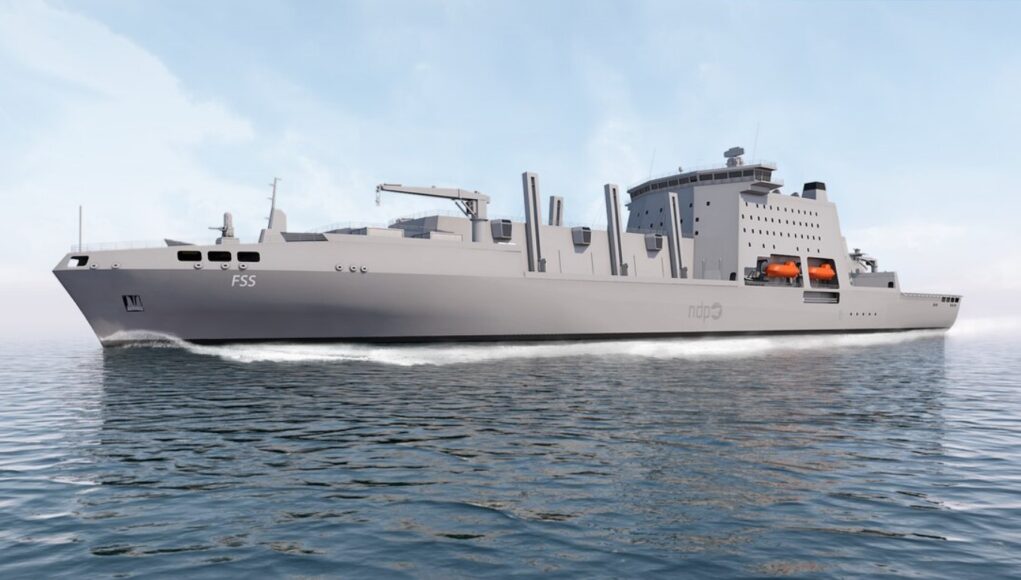
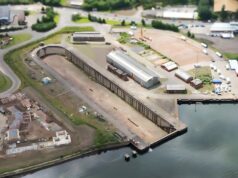
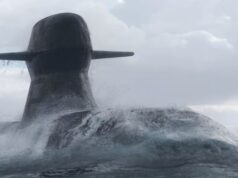
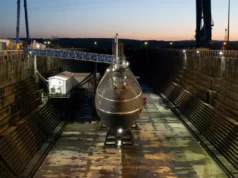
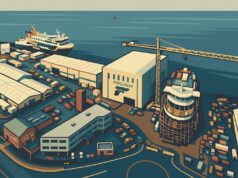
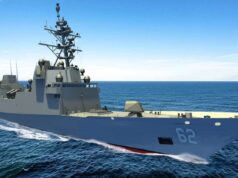
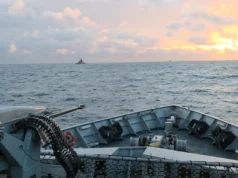


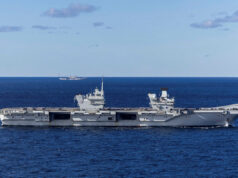
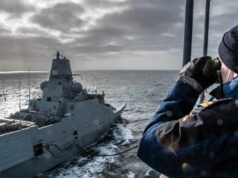

” UK’s current shipbuilding infrastructure is not sufficient to meet the MoD’s aspirations for defence contracts.”
If this is so, are we talking about another boom or are we looking at a sustained recapitalisation of the Royal Navy’s fleet? If it is the latter then the MoD needs to get a grip on what comes after the T26 and T31. Even with 8x T26 we simply will not have enough ASW platforms to cover the threat if we get into a bun fight with the CRINK axis. So I would hope for a third batch of T26 being ordered to keep the Clyde yards busy.
For Rosyth the navy needs to pull it’s fingers out and either get the T32 moving into the Assessment Phase, or scrap it and order an up-gunned second batch of T31. Frankly, I’d go for the latter although having said that I wouldn’t be too upset if the Royal Navy ordered a second tier AAW frigate based on the A170 design that Babcock have in their back pocket. It could easily carry two radars and plenty of Aster and CAMM SAM’s, plus a few other goodies, of course, it could be badged as a stretched T31 or T32.
Barrow’s future seems to be assured given the Vanguard and AUKUS SSN programs and BAE Systems are reportedly investing heavily in the yard.
As for H&W it is good that they are getting millions in investment but all of this is apparently based on an order for 3x FSS ships. However, the article suggests that the MoD is looking to build far more and frankly so does the level of investment that Navantia, BAE Systems and Babcock are making suggests that they have confidence in the future which given the history of MoD ordering seems a tad risky unless they have been given the nod by the government..!?
Cheers CR
The MOD’s budget is also not sufficient to meet the MoD’s aspirations for defence contracts. The trick is balancing the three things: the Navy’s aspirations, the available budget and shipbuilding capacity (alongside maintenance). I agree there’s risk here, and we have to hope that government can be trusted not to come up short financing the surface fleet build, when the temptation is always to “save” short-term money.
I have to say this is very good news and I think it’s important to recognise that one thing this government seems to be getting right is its industrial strategy.. they played it right with HW.. it was not HW it was a failed energy exploration and infrastructure company that snapped up some dead shipyard for pennies in the pound to win a huge government contract and capitalise from there.. the leadership had not a clue how to run a ship builder let along a military shipyard.. Navantia, investing in and building Navantia UK’ is a huge step up for UK ship building capacity..especially as they are also committed to appledore as well
This mean the Uk now has the following military shipbuilding capacity:
Govan: sheds for building 3 large frigates or destroyers at a time.
Scotstoun: able to fit out 2 frigates or destroyers at a time
Essentially the Govan, Scotstoun complex can build 5 large vessels probably knocking out 1 a year if the orders are kept up.
Rosyth: shed for building 2 frigates or destroyers up to about 7000 tons as well as fitting out 2
The Rosyth dockyard can probably pop out a frigate a year if the orders come in
Appledore: sheds for a 90 meter 2500 ton OPV as well as space to fit one out.
Appledore can pop out one OPV per year
Belfast: large vessels amphibious, logistic, etc. Let’s see but assume it can keep the RFA in oilers and logistic vessels so if the orders keep coming let’s make a finger in the wind of 1 large none complex ship every two years
Barrow it can be building 3 nuclear subs and fitting out one.
Barrow if given it’s head and orders can produce a SSN every 12-18 months ( it’s historically done that when the money and will was there)
So if we look at the future shipbuilding capacity over a decade if your turning the money tap on and not gapping orders
20 major surface combatants
8-10 SSNs
10 large 2500 ton OPVs
5 large surface vessels.
That is a ton of shipbuilding, what is sad is that is shows if the British government had not just stopped ordering ships for around 15-20 years the RN could have had 30 modern major surface combatants now…
The thing is even this pretty significant ship building capacity is going to struggle to dig the RN out of its hole.. before 2040 unless the government adopts a just keep ordering and building approach
For me this means
Babcock need to just keep knocking out T31 variants for a while after the 5GP Type 31 a follow-up 6-8 AAW variants ( with an added long range search radar.. and CAMM MR as a good enough AAW frigate to complement T45 they could build these by 2039
BAE to build the 6 MRSS up to 2039
BAE and Babcock to both build 4 really big T83 between 2039 and 2045 as the last T45s exit stage left
That would give you
By 2035
8 T26 ASW frigates
5 T31 GP frigates
4-5 T31 AAW frigates
6 T45 AAW destroyers
2 MRSS littoral strike and patrol craft
5 rivers 2
5+ new patrol and mine warfare ship ( 2500 tons)
So 25 modern major surface combatants for 2035 including 11 AAW platforms. And 10 good patrol and mine warfare platforms
By 2045
8 T26 ASW frigates
5 T31 GP frigates
8 T31 AAW frigates
4 T83 AAW destroyers
6 MRSS ( littoral combat and patrol vessels)
15 new patrol ships
So 31 major surface combatants for 2045 including back to 12 AAW platforms and 15 2500 patrol and mine warfare ships
If they keep it simple and admit they cannot just have an exquisite AAW platform.. so
1) build on the T31 as a second tier AAW platform by adding a second long range search radar and CAMM MR for 100km+ range ( it did start life as an AAW ship)
2)then get appledore to churn out adiquate patrol ships ( 2500 tons, hanger for wildcat/ UAV, crane and work deck for mine warfare or other autonomous systems.. space for shipping containers mine warfare or subsurface unmanned patrol craft, 57mm gun for protection.
3) make the MRSS a big 15,000 ton littoral strike frigate, that can lead amphibious raids, but also be a autonomous vessel mother ship and patrol vessel ( 2 spot flight deck and hanger for Merlin, Well deck or stern ramp for 2+ landing vehicles and autonomous vessels, 57mm gun ( or 5inch if the money gives ) x2 40mm, CAMM and lots of NSM as a precision fires.
4) finally get BAE and Babcock to share building a T83, which should have 3-4 10,000-15,0000 ton all singing all dancing ships that replace the last T45s in the mid 2040s
All the while Belfast can be building the Stores ships, then the Point/bay replacements ( 6 logistics/sea lift vessels that will go to the RFA that should have an over the beach capacity for heavy equipment).
We cannot staff 19 escorts, let alone more
That I’m afraid is a bullshit answer that the political classes use..we can crew the number of ships that we have no more no less..you need the ship to build and train the crew.
We have plenty of people in the country, we just need to recruit, train and retain..as you will note the numbers are for 3035 and then 2035..most of the crews for those 2035 ships are still sitting in school and crews for the 2045 ships are either in nappies or have not been born yet..so we don’t have the crews now for ships we are commissioning in 2035-2045 is just so much utter shite. We train the crews we need to match the number of ships we are planning to build.
If I had said let’s just buy a load of surface combatants second hand and commission them next week you can use the we don’t have the crews argument…if you use it for ships in ten years time.. I will tell you exactly what I would have told my emergency care providers, when I oversaw that workforce…set up the training pipelines for what you need and make sure you have a strategic workforce plan you follow…
Ok great, enjoy your fantasy fleet. Fact is we have a goal of 19 escorts and we can’t even provide for that. So how would we provide for any increase
Buy actually having ambitions strategic plans and investing and not accepting abject failure in defence policy procurement and recruitment…. Because we are now in a Cold War with Russia and china and pretending we don’t have to make serious effort is essentially walking into a catastrophic war that will potentially cost everything.
Agreed. There has to be a drumbeat of constant production for at least 3 yards. That way you keep long term costs low by retaining skills, permitting long-term capital investment and providing room for innovation. To attain that and to avoid damaging gaps of production it is probably even worth producing ordering more ships than the Navy needs. The MOD could always sell off the earlier ships of a class to recover funds and they would also make savings from not having to provide an older ship with a mid-life update.
To accomplish this we will need a complete change of mindset of our political class and the Treasury. Short term thinking needs to burnt out of the culture of the MOD and Whitehall. The weight of proposed budget cuts and cost savings needs to be weighed over the long term not the next financial year. Any proposal that actually costs you more money over 10 years than saves you money over the next 3 should be automatically binned and it’s advocate removed from an responsible Decision-Making role.
In my world George Osborne would have been demoted from Chancellor to Tea Boy.
Agree, in year accountancy is essentially something for the family home.. where you assess your spending needs month by month and a yearly review is essentially strategy planning.. nations need to plan by the decade and anything that interferes with and reduces the effectiveness of long term planning should be reduced.
Essentially some things need to be essentially supra political and agreed as long term plans by consensus and not used as political or in year footballs.
These include
Deference
Healthcare
Power
Water
Transport
Food security
Hmm. We have a welfare bill that is rising inexorably and a government whose MPs will rebel against significant cuts to it. Health, education, transport all demand
increased funding. UK is still borrowing 4.8% of GDP annually(£137b) adding to overall debt of 100% of GDP..
How is any significant increase in defence spending going to be funded? Without export orders, how do you keep all the yards busy.? If you plan to have 3 FSSS, what does the builder do until their replacements are due in 25 years time? Can UK afford to offer a TOBA type deal to all the current yards?
I think there will be no major increase in the surface fleet. T32 and MRLS will be rolled into one. Any additional funds for the RN will be swallowed up by AUKUS.
The RN will be in better shape by the early 2030s with a newer surface fleet. But it won’t be much larger.
That is a realistic appraisal Peter. We will get to 19 escorts but that will be the budget used up. The T83 destroyer will be an expensive investment and there won’t be any spare money for more Tier 2 escorts.
Virtually every government department is strapped for cash – prisons, judiciary, schools, roads, social care etc. Getting more money for defence is going to be a struggle, whichever party is in power. If we can get some growth in the sluggish British economy and get exports up, 3% on defence might be feasible.
If there is a future rise to 3%, I don’t think more naval escorts are the priority. An additional buy of Typhoons would be rather more important and the army is in need of a lot of new equipment. The navy has a lot of other requirements apart from escorts.
It’s brilliant. Few mates who work in h and w. Great news